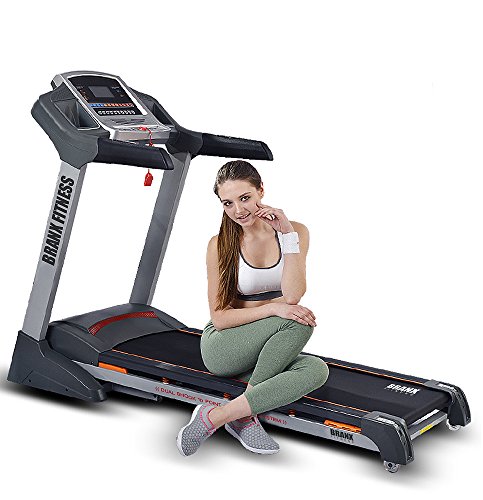The Advantages of Small Treadmills with Incline: A Comprehensive Guide
As society becomes more knowledgeable about the significance of physical conditioning and health, many individuals are turning to home exercise as a viable service for maintaining health and enhancing physical condition. Amongst the numerous fitness equipment available, the small treadmill with incline has emerged as a popular option for individuals looking for reliable and effective exercises in minimal spaces. This short article dives into the benefits, functions, and factors to consider of small treadmills with incline, as well as some frequently asked questions to help potential buyers make informed choices.
Understanding the Benefits of Small Treadmills with Incline
Compact Design and Space Efficiency
One of the most notable advantages of small treadmills is their compact size. Designed for users with limited area-- such as those in apartments or smaller sized homes-- these treadmills can fit flawlessly into any corner, making them a useful option for physical fitness enthusiasts who might not have space for larger machines. Their design permits easy storage and can often be folded for an even smaller sized footprint.
Incline Features for a More Intense Workout
Incline settings on treadmills enable users to imitate outside conditions and boost their exercises. By adjusting the incline, users can:
- Increase calorie burn: Incline workouts need more effort from the cardiovascular system and muscles, causing a greater calorie expense.
- Target various muscle groups: Walking or working on an incline engages the glutes, hamstrings, quadriceps, and calves more than flat terrain, adding to muscle toning and strength structure.
- Enhance cardiovascular physical fitness: Interval training that includes incline walking or running can improve cardiovascular health and stamina.
Adaptability for Different Fitness Levels
Small treadmills with incline come equipped with numerous functions that cater to various fitness levels. Novices may take advantage of lower incline settings, while more seasoned professional athletes can challenge themselves with steeper gradients for a more extreme workout. This versatility can keep users engaged and motivated, as they can advance accordingly during their physical fitness journey.
Ergonomics and User Safety
Today's treadmills are developed with user safety in mind. Lots of small treadmills come geared up with features like an emergency situation stop button, security clips, and cushioned running surface areas that help absorb impact. These ergonomic designs aim to decrease the risk of injury, specifically in individuals who may have pre-existing conditions or those just beginning their fitness regimens.
Key Features to Look for in a Small Treadmill with Incline
When thinking about buying a small treadmill with incline, potential purchasers ought to take the following features into account:
- Incline Range: Ensure the treadmill has a series of incline settings that match your fitness goals. Many small treadmills use inclines from 0% to 15% or more.
- Running Surface: Look for a belt size that suits your stride length. While smaller treadmills might use much shorter running surfaces, it's important that the belt accommodates your walking or running design easily.
- Weight Capacity: Check the maximum weight capability of the treadmill to guarantee it can support all designated users.
- Foldability and Portability: Many small treadmills come with the capability to fold or are created for simple transportation. Think about how you will use and keep the equipment.
- Technological Integration: Modern treadmills typically feature Bluetooth connection, app integration, and built-in exercises that improve user experience and keep track of development.
- Budget plan: Prices can vary commonly depending upon the features used, so it is crucial to establish a budget that aligns with your fitness requirements and monetary scenarios.
Often Asked Questions (FAQs)
1. Do small treadmills perform in addition to larger models?
Yes, small treadmills can offer an effective exercise similar to larger models. While there may be a difference in features and functionality, numerous small treadmills provide incline options and can accommodate numerous exercise regimens.
2. Can I work on a small treadmill?
While you can work on a lot of small treadmills, it's vital to inspect the treadmill's requirements to make sure the running surface is long enough for comfortable running. Recommended Studying discover them appropriate for running and running, but if you are high or have a longer stride, consider a model with a longer deck.
3. Is an incline really necessary for a good workout?
An incline can substantially improve the quality of your exercise by increasing strength and activating different muscle groups. Nevertheless, it is not essential for everybody. Novices may find benefits in starting on a flat surface and slowly presenting incline once they build strength and endurance.
4. Just how much should I expect to invest on a small treadmill with incline?
Costs can differ extensively based on brand and functions. Usually, expect to spend anywhere from ₤ 200 to over ₤ 1,000 depending upon the treadmill's capabilities. There are budget-friendly choices along with more premium designs.
5. How much area will I require for a small treadmill with incline?
Though designed to be compact, it's recommended to have a clear area of a minimum of 6-7 feet in length and 3-4 feet in width for safe operation and maneuverability.
A small treadmill with incline is an excellent investment for those who prioritize their physical fitness while handling spatial restrictions. With an efficient combination of compact style, adaptability, and incline capabilities that enhance exercise strength, these treadmills provide a useful and effective ways of exercise. Whether you're a novice or an experienced athlete, incorporating a small treadmill with incline into your home exercise routine can help you achieve your fitness objectives and promote a healthier way of life.

